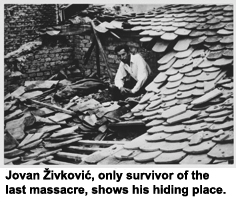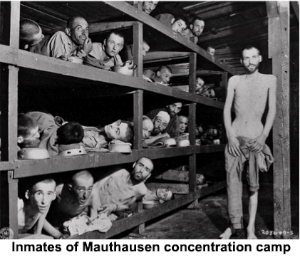JASENOVAC, THE AUSCHWITZ OF THE BALKANS
TYPES OF CONCENTRATION CAMPS
During World War Two, political opponents of the Third Reich, individuals deemed criminal or undesirable, and also entire nations deemed to be dangerous, were interned in detention centers, called concentration camps in English. In German, such a facility was called lager; in Serbo-Croat it was called logor. Logors could be divided into three general types: war prisoners camps, forced labor camps, and death camps.
Allied war prisoners in Germany and in German-occupied Europe were usually properly treated, in compliance with the Geneva Convention.
Soviet prisoners of war were treated in ways intended to cause very high death rates. Some were killed at once.
Forced labor camps could have moderate death rates for deportees employed in skilled labor, or 100% high death rates, as for example in the quarry at Mauthausen, where the intent was to cause a speedy death by very heavy labor and a starvation diet.
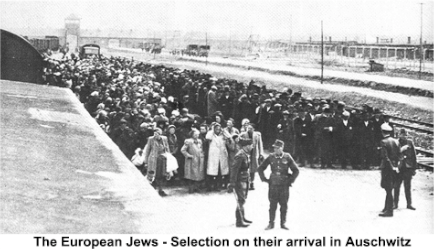
Convicted criminals and German opponents of the regime would be sent to forced labor camps. Political opponents of the Reich and partisans, as the guerillas in occupied Europe usually called themselves, could end in death camps or in forced labor camps. Most Jews and Gypsies were sent to death camps.
LOGORS RUN BY ALLIES OF NAZI GERMANY
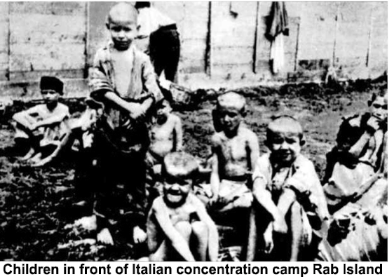
ITALIAN LOGORS
Although the treatment of rebels to Italian authority was quite murderous, most Italian concentration camps had very high survival rates. Most Italian government officials, and especially Italian Army officers, saw it as a point of honor to sabotage the national extermination policies of their hated German allies. Professor Johnathan Steinberg describes this as “a kind of national conspiracy to frustrate the much greater and more systematic brutality of the Nazi state.”
While some Yugoslav Jews survived under protection of the Chetniks, most who survived the war were with the Partisans or were brought to Italy for internment before the 1943 Armistice. That deportation was intended to save them, and indeed did save their lives.
CROATIAN LOGORS
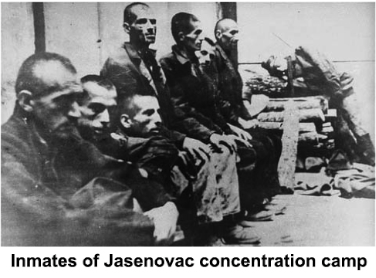
The Independent Croatian State (NDH) included Croatia and Bosnia. The decision to exterminate Croatia’s minorities was taken soon after the establishment of the NDH in April 1941. That policy was opposed by the Italian Army. German officials and officers also believed that the Ustasha extermination policies against Serbs were counterproductive; however, in the absence of orders from Berlin, they did not act to interfere.
Italian officers instead took the initiative, without waiting for orders from Rome, and gave protection to both Serb and Jewish populations. As a matter of fact, the Italian Army ignored orders from Rome, even when Mussolini himself, in 1942, approved the transfer of Jews from the Italian occupation zone in Yugoslavia into the hands of the Germans.
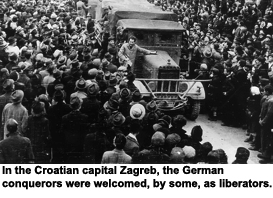
The deportation of the Jews of Zagreb was not ordered by the Germans, and began in June 1941. By December 1941, thousands of Croat Jews had been taken to Ustasha logors, where they were killed. Since there had been conversions into the Catholic faith and intermarriage with Catholics, some Jewish families were protected by the regime.
JASENOVAC CONCENTRATION CAMP
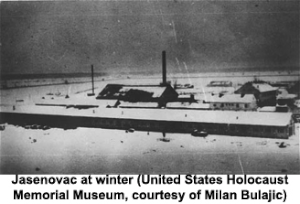
Jasenovac was Croatia’s largest death camp. It was a network of several sub-camps, established in August 1941. It certainly was a death camp, since the plan was to exterminate all its inmates.
While the killing in Sobibor, Treblinka, or Auschwitz was carried out on an industrial basis, in Jasenovac the Ustasha guards competed in killing contests, on an artisanal level. The Croat Ustashas, the military wing of a clerical party whose symbol was the knife and crucifix, appeared to enjoy the burdensome labor of manual killing; they took pride in saving bullets, as they killed their enemies. They used knives, hammers, axes. Occasionally they used saws.
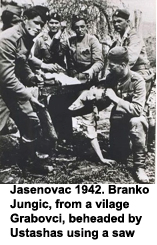
(See under chapter Denial Watch)
It was a fact that skilled laborers, doctors, or even good typists had better opportunities to survive a little longer, as one can learn from the story of Alexandar Ajzinberg, which was recorded in English. His mother had the opportunity to escape from the Nedic Cetniks to the Mihailovic Cetniks and save herself and her son, thanks to her typing skills.
On April 22, 1945, 600 able-bodied inmates, armed with sticks and hammers, took the desperate decision to organize a mass escape, to face a very likely death today, as opposed to a certain death tomorrow. Most died under machine gun fire, but 80 emerged from Jasenovac and survived.
